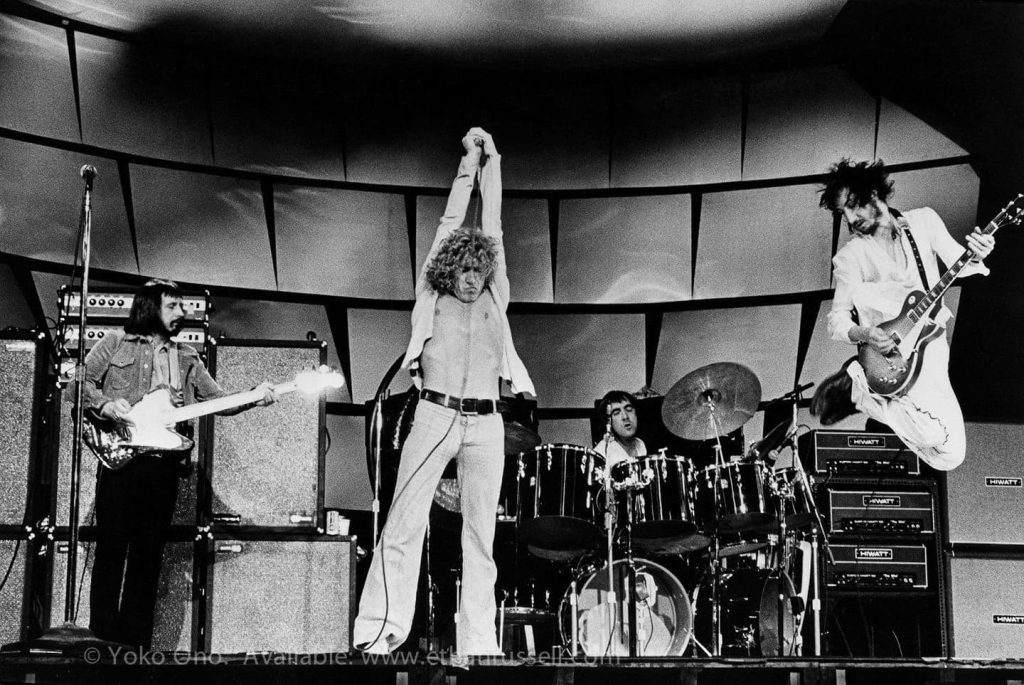
Released in November 1971 as the opening track of The Who’s landmark album Who’s Next, “Baba O’Riley” is one of the most celebrated songs in rock history. Though often mistakenly referred to as “Teenage Wasteland” due to its unforgettable chorus, “Baba O’Riley” is an epic fusion of rock, electronic, and classical elements, showing The Who at the height of their creative powers. Written by the band’s principal songwriter and guitarist, Pete Townshend, this track has become one of the band’s defining anthems.
Musically, “Baba O’Riley” is distinctive right from its opening bars, which feature a hypnotic synthesizer riff that was groundbreaking for its time. This synth pattern was created using a Lowrey organ and represents Townshend‘s experimentation with electronic music, a direction he was pushing for as part of his larger, ambitious project known as Lifehouse, an abandoned rock opera concept. The song’s title is a tribute to two of Townshend’s greatest influences: spiritual guru Meher Baba and minimalist composer Terry Riley.
Upon its release, “Baba O’Riley” did not chart as a single, but it soon became one of the most revered tracks on the album. Over time, it gained massive radio airplay and has since become one of the band’s most iconic songs. The track is propelled by Keith Moon‘s explosive drumming, John Entwistle‘s pulsating bass, and Roger Daltrey‘s powerful, raw vocals. It showcases the band’s ability to blend sheer rock power with an almost meditative electronic pulse, something quite rare in early 1970s rock.
The song’s lyrics paint a vivid picture of youthful disillusionment and resilience. When Daltrey belts out, “Don’t cry, don’t raise your eye, it’s only teenage wasteland,” he’s expressing both the disconnection and the hope of a generation grappling with social change. While Townshend originally conceived the song as part of the Lifehouse narrative, which was meant to explore deeper themes of spiritual rebirth and the struggle of youth in a dystopian future, “Baba O’Riley” transcended its original concept and became an anthem of rebellion and self-determination. The phrase “teenage wasteland” resonates with the sense of lost youth, but it also serves as a rallying cry for young people to push through and find their place in the world.
Another striking feature of the song is its use of a violin solo, played by session musician Dave Arbus, which brings the song to a thrilling, almost folk-like crescendo. This unexpected addition contrasts with the electronic opening and the rock elements, giving “Baba O’Riley” a timeless and genre-defying quality that has helped it endure through the decades.
“Baba O’Riley” has taken on a life of its own over the years, frequently used in films, television, and sporting events. Its adrenaline-pumping energy has made it a staple at The Who‘s live performances, where it continues to electrify audiences. The song’s unique combination of synth-driven rock and emotional lyrics helped Who’s Next become one of the greatest albums in rock history.
Today, “Baba O’Riley” is universally regarded as a classic. It’s more than just a song—it’s a cultural milestone that captures both the disillusionment and the fierce spirit of a generation. The track still feels fresh and urgent, decades after its release, continuing to inspire listeners with its message of endurance and its groundbreaking sound. Whether you’re drawn to its rebellious energy or its haunting synthesizer intro, “Baba O’Riley” remains one of the most enduring and innovative songs by The Who.